Want to attract hummingbirds to your yard but not sure what (or how) to feed them? We’re here to help with this definitive guide to hummingbird feeding. In this post, we’ll cover everything you need to offer hummingbird-friendly fare in a safe environment for these small but mighty birds. Let’s get started, shall we?
Why Should You Feed Hummingbirds?
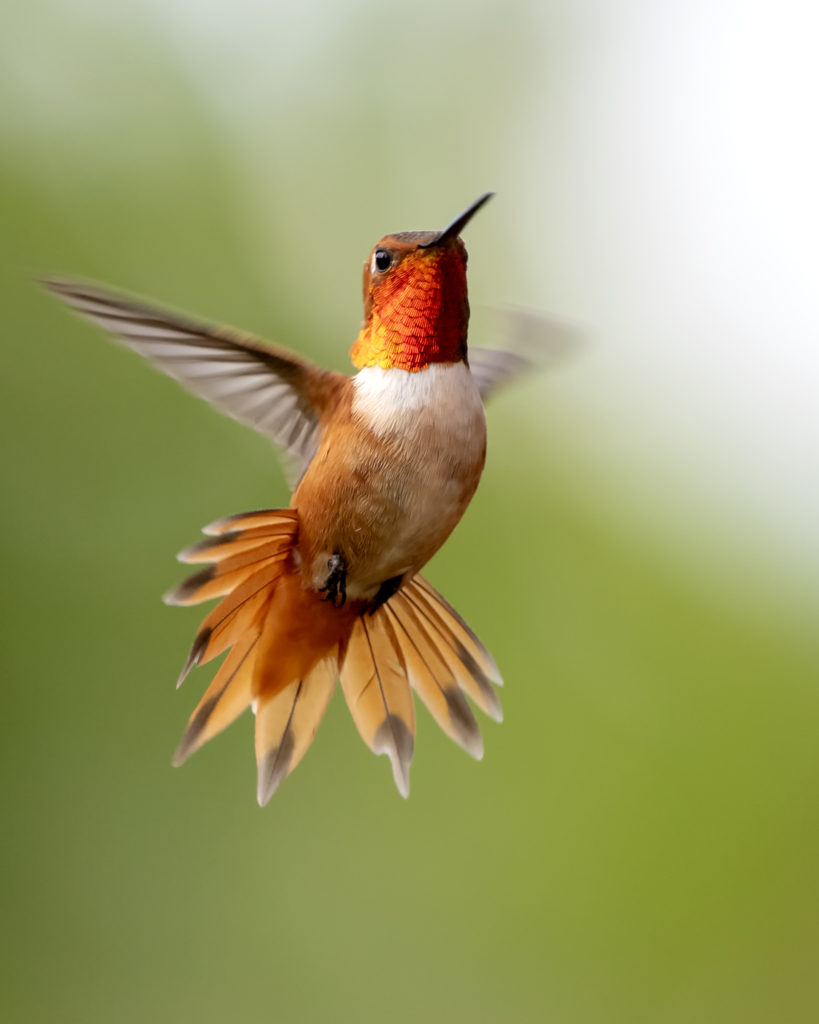
As with any wild bird feeding, providing food for hummingbirds supplements the food they find in nature. It acts as a source of fuel for nesting and migrating, and since hummingbirds need to eat every 10-15 minutes (which means visiting between 1,000 and 2,000 flowers daily), it’s also important for everyday sustenance. Most importantly, feeding hummingbirds supports a type of bird whose numbers have been in decline for decades—with some species seeing as much as a 62 percent population loss!
When to Feed Hummingbirds
Hummingbirds feed virtually all year long, though when to put out your hummingbird feeders depends on your location, climate and temperature, and migration patterns. As such, it’s a great idea to provide feeders year ‘round. But if you want a better idea of when to expect hummingbirds in your area, here’s a nifty tool to help guide you.
What to Feed Hummingbirds
Flower nectar
Have you noticed that hummingbirds tend to flit from flower to flower? That’s because these speedy little birds love the nectar they provide, which is why many people like to go the natural route and plant a hummingbird garden. These gardens include one or more flowers native to the area, which may include beebalm, coral honeysuckles, cardinal flowers, and different kinds of sages. The colors red and orange attract hummingbirds, so try to plant tubular plants in these colors. It’s important, however, that you avoid using pesticides, which can harm and even kill hummingbirds.
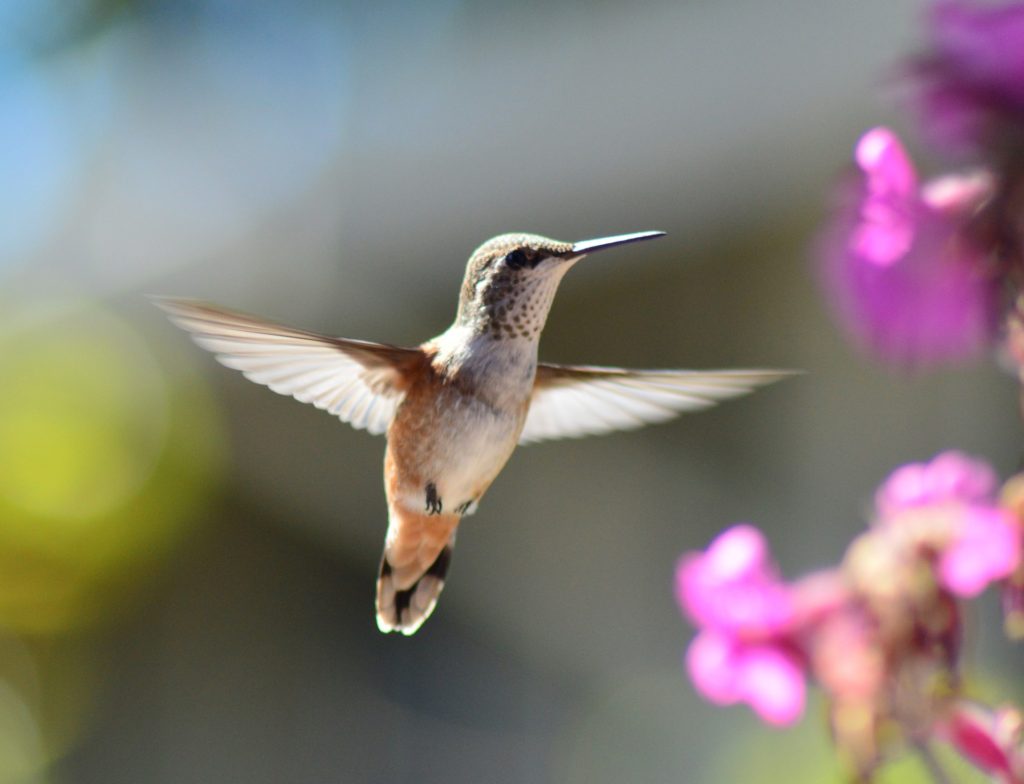
Insects
Hummingbirds also eat insects, and they are an important protein source. Planting native plants will help attract more insects to your garden. You can also put out some overripe fruit to attract fruit flies—a hummingbird favorite. And, as mentioned above, avoid using pesticides and insecticides, as it will not only drive away the insects hummingbirds like to feed on, but it can also harm the hummingbirds themselves.
Homemade nectar
You can buy hummingbird nectar concentrate or mix your own homemade 1:4 solution of refined white sugar and water. If you go the homemade route, you’ll need to bring this solution to a boil and let it cool before pouring it into your feeder. Any extra solution should be refrigerated and will typically stay fresh for 7-10 days.
PLEASE NOTE: Regardless of the solution you choose, DO NOT add (or use solution with) red coloring, as it’s unnecessary and can be harmful to hummingbirds. Also, avoid using brown sugar, molasses, honey, or artificial sweeteners in your homemade solution, as these can also be detrimental to hummingbirds.
Where to Place Hummingbird Feeders
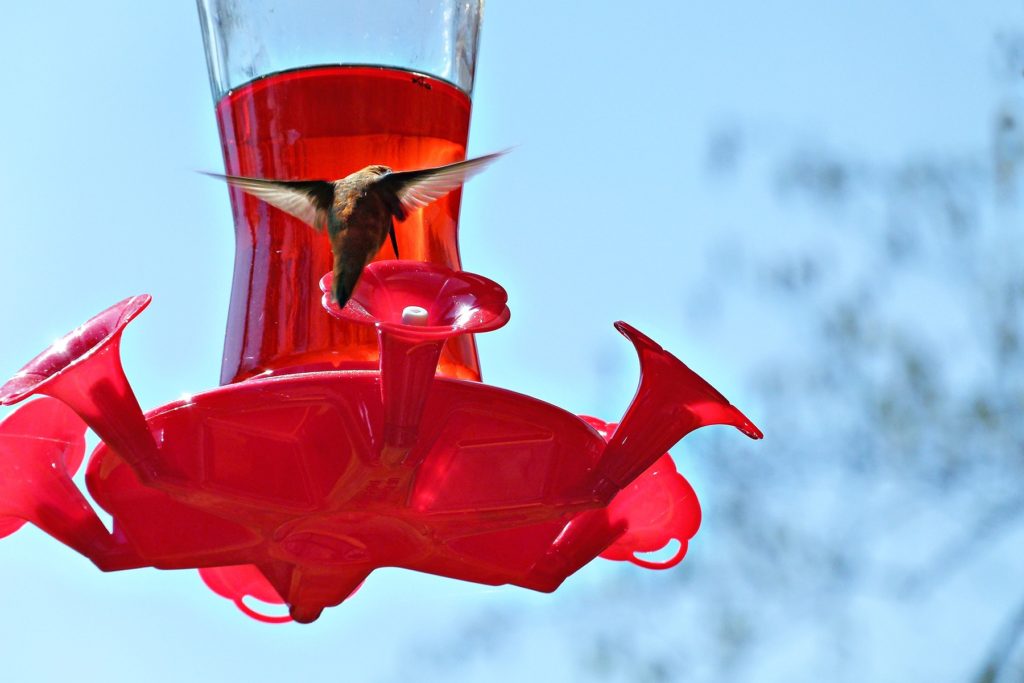
Hang your hummingbird feeder in an area of your yard or garden where there is shelter from sun, wind, rain, and snow. Placing hummingbird feeders out of direct sunlight also helps keep the nectar fresher longer. And since hummingbirds are territorial, it’s a good idea to get a feeder with several feeding ports, or to hang two or more feeders in your yard to prevent fighting.
To prevent predators from reaching your hummingbird feeder, place it at least four feet above the ground. If you wish to avoid window collisions, either place the feeder very close to a window or at least five feet away from one. And if you want to help local hummingbirds find your feeder, place red or orange flowers near it to attract their attention. And remember to put your feeders where you can see them, whether it’s a place with a clear sightline from your kitchen window or hung near your favorite outdoor relaxation spot.
Refilling and Cleaning Your Hummingbird Feeders
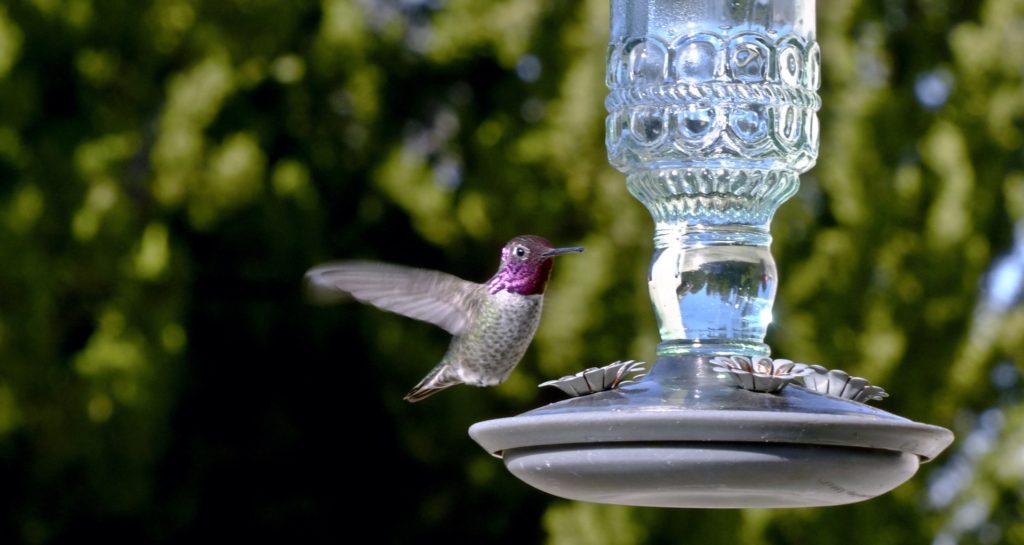
Change hummingbird nectar every few days to prevent it from spoiling and growing harmful bacteria and mold. In hot weather, change it more frequently—we recommend every day or every other day. Because nectar need to be refreshed so often, you may want to make smaller batches of nectar solution or fill the feeder only half- or a quarter-way full. Store any unused nectar in a sealed container in the refrigerator.
We also recommended cleaning your hummingbird feeder each time before refilling it. This will prevent the spread of mold and bacteria, which could cause birds to get sick and spread disease to other birds. The National Audubon Society recommends cleaning hummingbird feeders with hot water mixed with a small amount of vinegar, and avoiding dish soap, as it will leave a residue that may be harmful to birds.
Providing Water for Hummingbirds
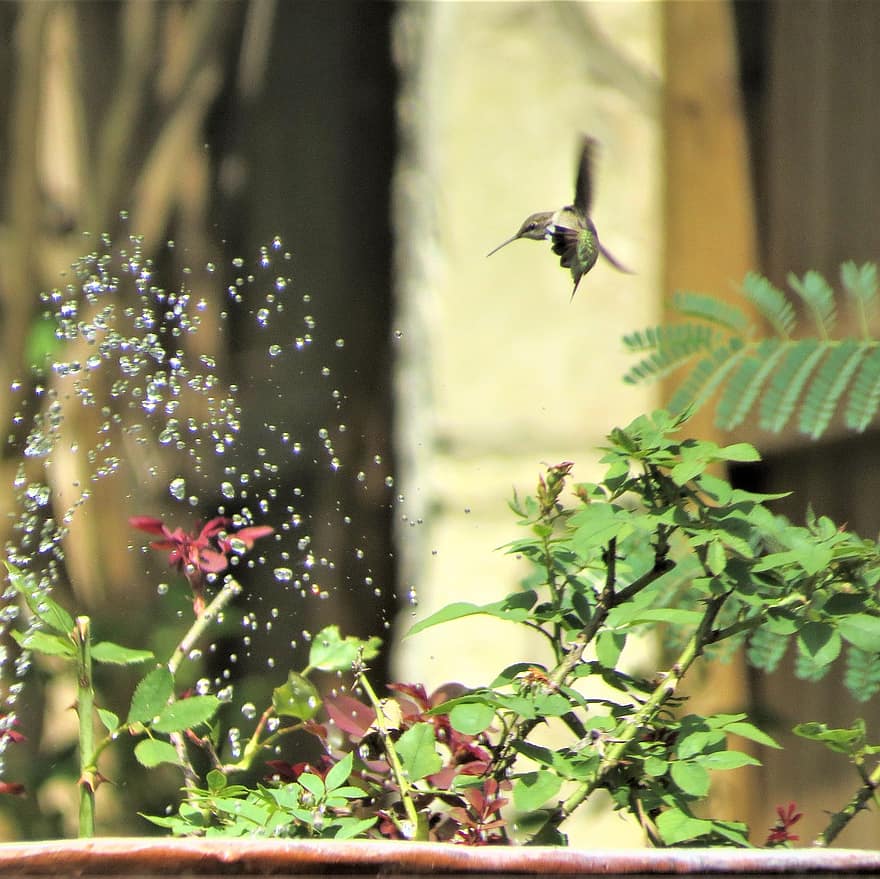
Unlike other types of birds, hummingbirds visit birdbaths and other water sources primarily to bathe, and not to drink (as they get their water through nectar). Still, it’s a good idea to provide a water source, like a fountain or birdbath for them to bathe in, since they bathe more frequently than other bird types. Keep the water very shallow, with moving water (which has a better chance of attracting these birds’ attention).
Learn More About Your Local Birds with Chirp!
Looking to disconnect from your devices and reconnect with nature? Join us for a live or virtual bird walk, where we take you on an educational tour of areas around Big Bear. Want to learn more about the birds in your area? Join us for one of our bird talks, offered both in-person and virtually, where we get bird and nature experts to teach us about the wildlife around us. Check our events calendar to see what’s coming up! We can’t wait to visit with you—virtually or face-to-face!

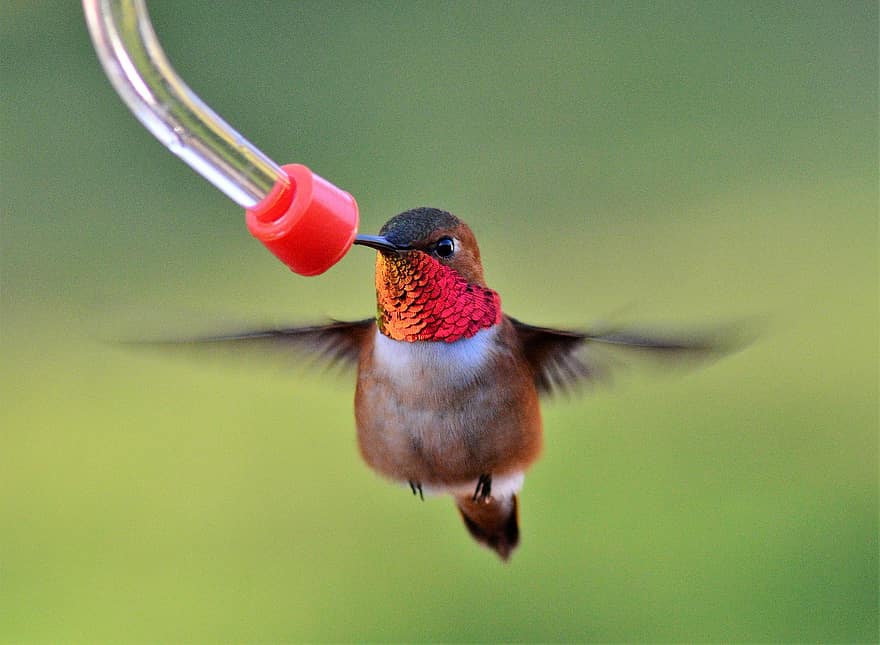

2 comments
Why does the water need to be boiled? I used to nuke it but then I discovered I could let it sit & dissolve. No?
I think the idea behind boiling water is two-fold: 1.) It sterilizes the nectar to slow the growth of anything undesirable like mold, and 2.) It helps better dissolve the sugar crystals more quickly and thoroughly. Consider experimenting and see if unboiled nectar spoils any quicker.